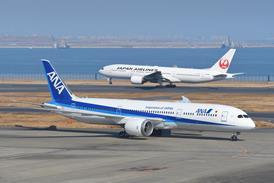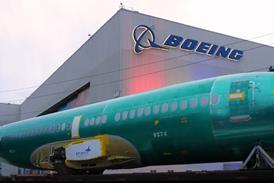MICHAEL PHELAN / LONDON
IT is finding its way into the traditional overalls and oilcan world of the maintenance industry and is set to transform working practices
Information technology (IT) is finally being embraced in the aircraft maintenance industry. The pace of modernisation is set to take off, however, in an industry where cost efficiency and turnaround times are now the key goals. Over the next 20 years, revolutionary new technologies and working practices may change the maintenance, repair and overhaul (MRO) industry for ever.
Two key technologies are set to transform the requirements driving component and line maintenance and their working practices and job tracking.
"Health monitoring" systems are being developed to fly on aircraft and predict the failure of individual components, allowing "just-in-time" repair or replacement. In place of costly scheduled maintenance checks where parts are discarded simply because their time is up, having served a predefined in-service life, parts would be quickly swapped during overnight stops, on the cue of advice from the aircraft itself.
Another innovation promises to make parts swapping as quick and user friendly as possible. The mechanic will wear a portable wireless device allowing fast access to technical records and job cards, and which will even allow component diagrams and instructions to be overlaid on to their view of the aircraft.
If all this sounds like a flight of fancy, it is worth examining some of the trials already being conducted as manufacturers and airlines race to introduce ground-breaking information management systems to their operations.
Aviation communications and applications specialist Arinc promises to make aircraft fault prognosis a reality with its Aircraft Condition Analysis and Manage-ment System (ACAMS). ACAMS aims to predict failures before they happen - the holy grail of the MRO industry. It consists of onboard and ground-based elements, communicating in real time via a datalink.
The onboard system collects information from numerous sources and analyses the data in real time to identify and manage anomalies that could affect future airworthiness. The system is being developed to monitor complex aircraft subsystems such as flight and propulsion systems, landing gear and structural elements.
Arinc says that ACAMS aims to "isolate and predict fault behaviour at the system level rather than at the line replaceable unit level". If a critical fault is detected, the onboard system automatically transmits the data to the ground crew, who can use it for maintenance planning and organising replacement parts for when the aircraft arrives at its gate.
Improved prognosis
Back on the ground, Arinc says: "The data can be combined with specific part history such as maintenance records, reliability and maintainability data, combined with aircraft quick-access recorder data for a higher-fidelity prognosis."
Arinc has already tested its ACAMS system on NASA's Boeing 757 testbed. The system successfully identified faults in the 757's landing gear, as well as in simulated lap-joint structures, and transmitted the findings by datalink. Flight tests of the ACAMS-equipped 757 are planned for 2003.
Boeing is pursuing similar goals with its Airplane Health Management (AHM) project. The system acquires data from the central maintenance computer - which on a Boeing 777 can generate 12,000 different fault reports - during operation, and downlinks the data to Boeing ground stations for onward transmission to the operators' nominated ground base.
Boeing AHM programme manager Robert Manelski says the benefits of AHM are threefold. "The system will aid primarily in fault forwarding, helping to provide advance warning of failures that affect an aircraft's airworthiness for its next flight, but also to provide failure prognosis and aid fault prioritisation for non-airworthiness-related faults," he says.
Boeing has been recording fault indications on some of its in-service fleet of Boeing 747-400s and 777s since service entry for the purposes of product improvement, says Manelski, and has accumulated vast quantities of data. "We've mined the data for statistically significant samples," says Manelski, adding that in some cases hundreds of occurrences of a fault and related conditions were repeated within the sample. "Our level of confidence in the patterns is very high, as we are using real-life data instead of trying to model the operating environment."
The main benefits of the AHM system when it is first deployed will be economic rather than safety-related, says Manelski, who adds that the additional information will allow airlines to make a more informed decision as to when to perform preventative line-maintenance work with minimum schedule impact or financial penalties. While AHM would be the vehicle for more wide-ranging prognostics in the future, such as structural monitoring, Manelski says the technology for such applications "is not yet mature".
Another revolution
Boeing is hoping to launch its first release of AHM commercially as early as the beginning of next year, contingent on the success of beta testing due to start with selected customers in mid-2003.
Once an aircraft is on the ground, maintenance technicians and mechanics take over. It is here, in the job processing and data retrieval systems, that another information revolution waits in the wings.
MRO providers have recently taken steps to reduce the time taken for a mechanic to source all the technical data, drawings and job records that must be reviewed for each task. Workstations are appearing in the maintenance bays of some providers, that allow mechanics local access to all the required information in electronic format within a few metres of the work area. The next step, however, is to move to handheld, wireless devices that mechanics could wear on their person and that are connected to the same central information retrieval system. Mechanics could then call up required information while in situ at the aircraft component being examined, whether the aircraft be in a specialised bay or at a gate on the ramp.
Air Canada and IBM are jointly developing a wireless "e-Toolbox" that gives aircraft line-mechanics wireless access to electronic documents and the airline's maintenance systems. The two partners, which have agreed a wide-ranging C$1.4 billion ($900 million) IT programme, designed the application to support all the maintenance, repair and operations data from Air Canada's legacy maintenance systems on a web application server. This information is then delivered over a secured wireless local area network to the mechanics' rugged laptops.
Air Canada says an additional benefit of having maintenance data online is that it facilitates the preparation of maintenance work for inbound aircraft and troubleshooting outbound flights. "It offers improved productivity and a quicker turnaround time for aircraft undergoing maintenance, which ultimately leads to improved on-time performance," it adds.
Following a successful trial on Air Canada's A320 fleet at its Montreal Dorval heavy maintenance base, Air Canada and IBM plan to market the wireless e-Toolbox to other airlines.
With unscheduled maintenance accounting for up to 60% of the maintenance workload, there are obviously huge benefits to be gained from reducing this work by even a small amount. More importantly, it would mean airlines could reduce disruption to their schedules and allow providers to plan more effectively, using their licensed staff and resources more efficiently. Wireless technology would be particularly beneficial for licensed staff, who could spend more time doing high-value work.
Maintenance could become more aircraft specific as well, with each tail number having its own maintenance plan tailored to the aircraft's own idiosyncrasies, rather than forcing it to conform to a fleet norm.
With "total support" fixed-price-style maintenance contracts between operators and MRO providers and even manufacturers becoming more popular, those bearing the costs will be looking very closely at the industry's efficiency, and speed will be the name of the game.
Source: Flight International























